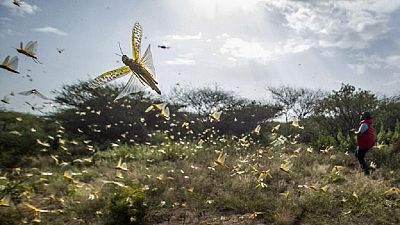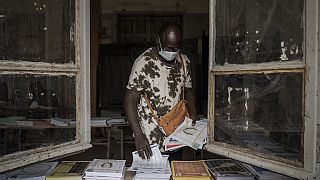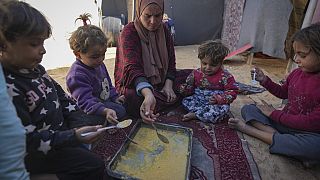Kenya
Desert locusts continue to threaten Kenya’s food supply after invading the north-western part of the country by the millions.
The Food and Agriculture Organization of the United Nations works with Kenyan logisticians to search for and monitor dense areas of locust invasions in the country’s desert.
Among them, Boris Polo and his team are using GPS data to spray blocks long before they are ripe enough to fly or lay eggs.
“So the issue, without doing control of locusts now is basically they will form big swarms and have the risk of going into the bread baskets of Kenya in the south and that will affect food production for the populations and the future of Kenya,” Polo said.
At this stage of their evolution, locusts are easier to control. They do not yet have the capacity to travel the usual 20 km per day and at the same time devastate everything green, the main source of food for livestock.
Farmers in southern Kenya are apprehensive about the outcome of this year’s harvest.
“These infestations are pretty serious. Kenya (in) 2020 has suffered already quite a lot with floods, of course COVID-19 and now the desert locust infestations that we seem to be finding everywhere”, he added.
Described as a scourge for humanity, locusts devastate crops and livestock and threaten the food security of more than 5 million people in Kenya, Somalia and Ethiopia.
AP











01:37
Record participation at 24th Sofi Great Ethiopian Run
01:36
Kizza Besigye faces Military Court as Uganda-Kenya jurisdiction row deepens
02:34
Initiative in Nairobi's Mukuru slums uses fly lavae to tackle food waste
01:48
Kung Fu gains popularity among young people in Kenya
01:38
Drones beat logistical challenges to delivery of medical supplies in Kenya
01:43
Democrats in Kenya fear what the next four years will hold, after Trump's U.S. election win